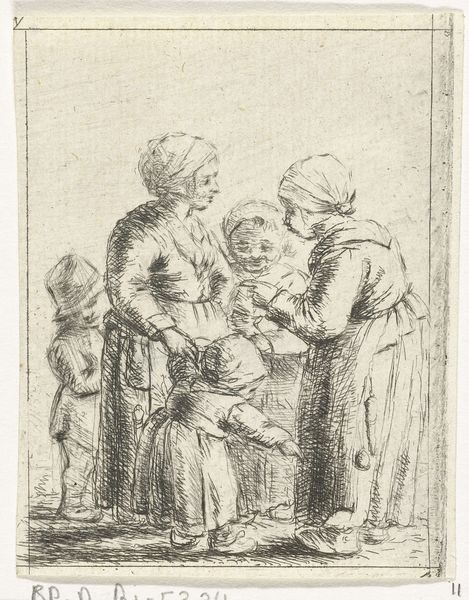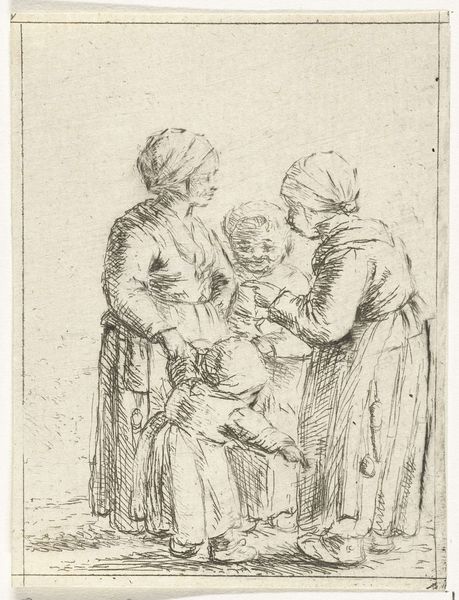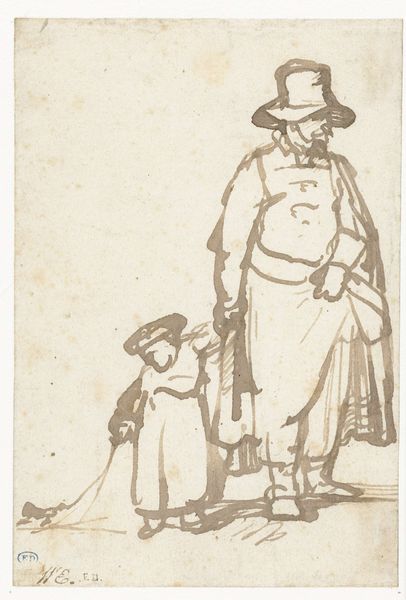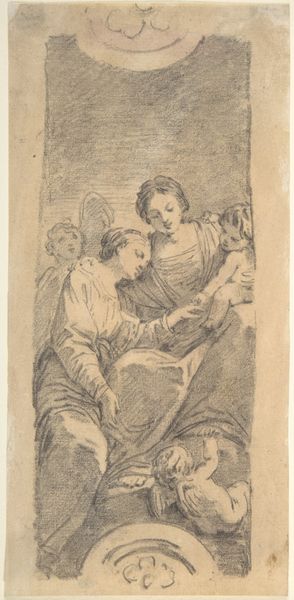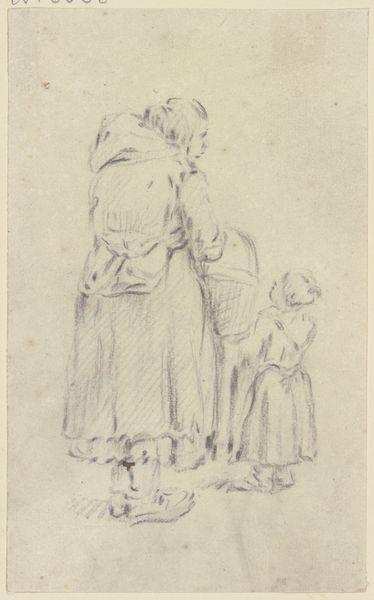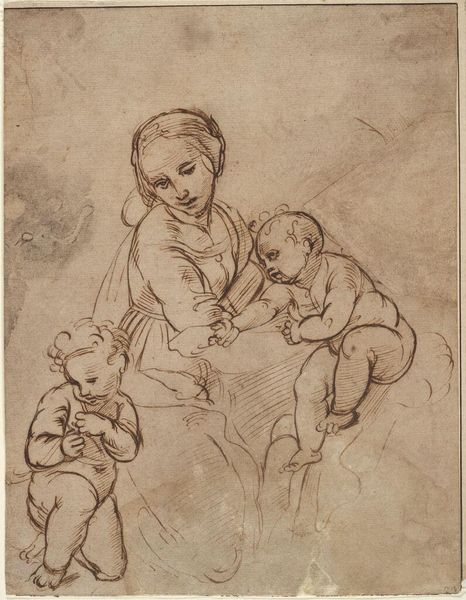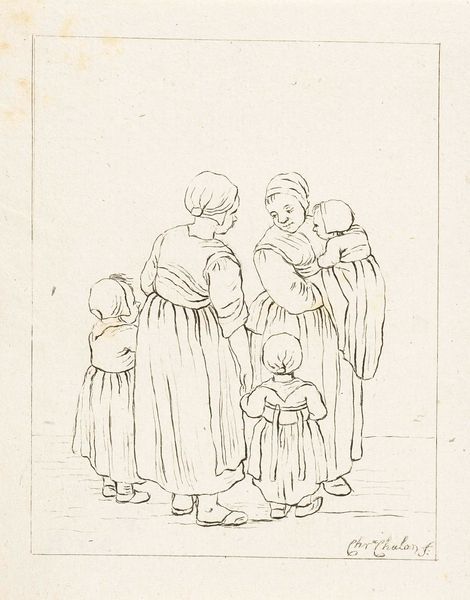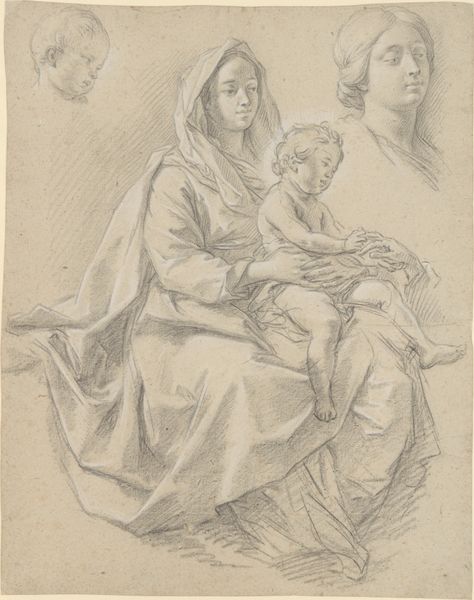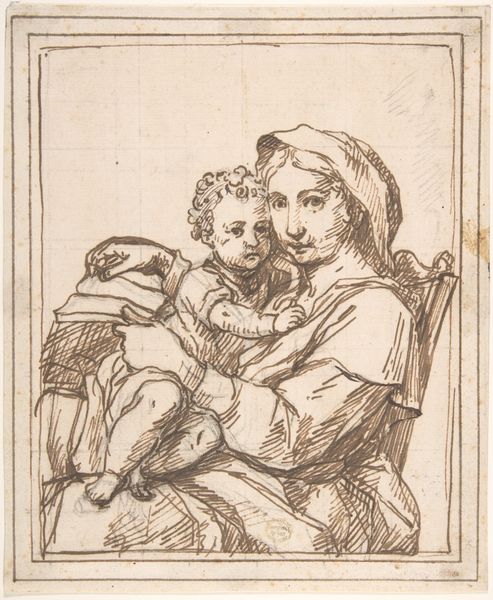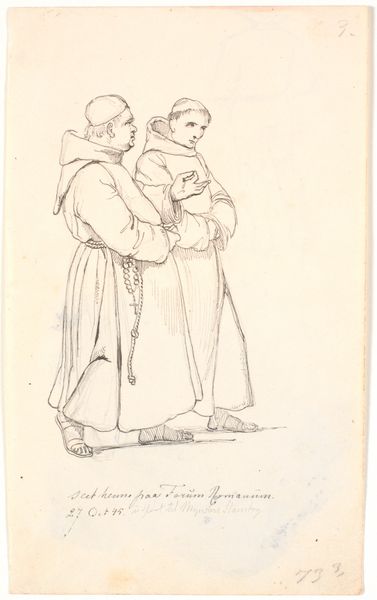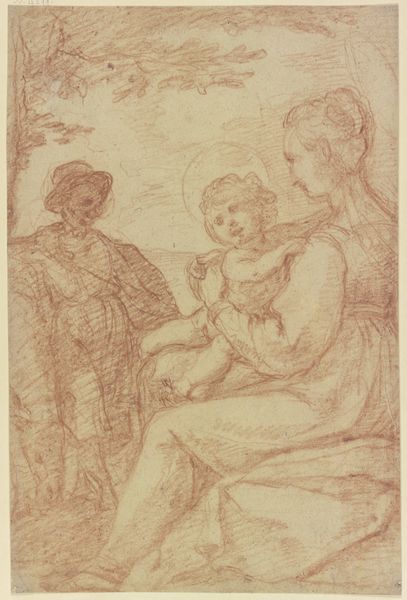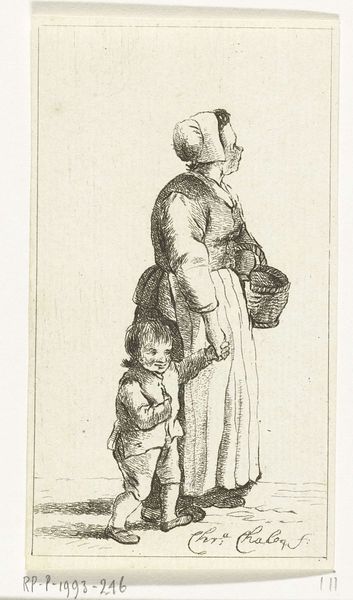
Stehende junge Frau mit einem Kind auf dem Arm, rechts neben ihr zwei weitere Kinder c. 1771 - 1772
0:00
0:00
Copyright: Public Domain
Curator: This pen and ink drawing at the Städel Museum, by Georg Melchior Kraus, dates back to around 1771 or 1772. The title translates to “Standing Young Woman with a Child in her Arms, Two More Children to her Right”. Editor: It feels very intimate. I’m struck by the slightly anxious, upturned gaze in all of them, especially the mother’s, it gives this seemingly everyday genre scene a certain psychological depth. Curator: Kraus lived during a fascinating period, navigating the currents of Enlightenment thought while witnessing burgeoning Romantic sensibilities. How does the subject matter fit within this historical and social framework, particularly concerning societal roles of women? Editor: Absolutely. Motherhood as both a sacred and potentially oppressive institution is highlighted. These are not idealized portraits. The children look solemn, not playful. This aligns with romanticism, finding sublime beauty even in ordinary, less-than-perfect circumstances. The way he captured those small flowers the children are holding becomes a powerful symbol of innocence and fleeting moments of joy. Curator: The dress also seems quite characteristic, almost an allegorical figure of motherhood with children in tow, their roles assigned by both nature and socio-economic demands of that historical moment. Their simple garments are clearly markers of their economic position within their village society. Editor: The monochromatic ink washes emphasizes the simple, almost stark nature of their existence. Despite what little their family might have, these items show familial love in its humblest form. The viewer connects not only with that material object but more broadly, with what they represent - love, beauty and memory. Curator: Exactly. In scrutinizing an object, we can decipher the hidden power dynamics interwoven in its fabric. The simplicity underscores resilience in a pre-industrial context marked by significant challenges for women and children. It reveals more than a surface-level illustration. Editor: And perhaps also speaks of the quiet dignity and strength that characterized their everyday lives. The symbolism Kraus imbeds serves not as a mere record of what the subjects were doing, but an indication of how, why, and who. Curator: Ultimately, the drawing provides insights into our understanding of class, gender and familial obligation that helps illuminate overlooked perspectives. Editor: A poignant window into the lived experiences that resonates deeply today, I think.
Comments
No comments
Be the first to comment and join the conversation on the ultimate creative platform.
